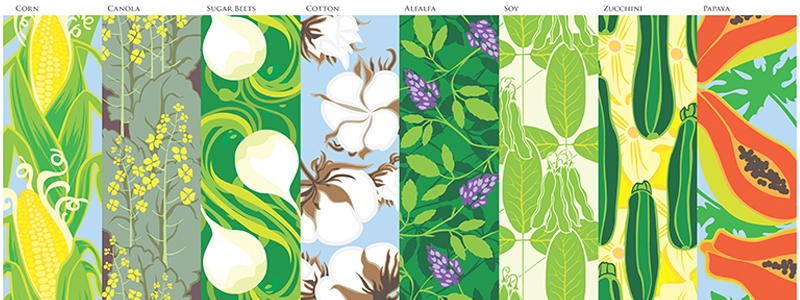GMO’s in Your Baby Food

This really is a hard topic to both read about and write about because once you start going down the rabbit hole and reading all the information and facts about GMO products you will find that there really is nothing you can possibly do to avoid GMOs altogether, because they are everywhere and in almost everything. And this scares me. It scares me on multiple levels. But what scares me the most is that foods are not being labeled one way or another, so you really have no clue what you are consuming.
GMO products are in 70-90% of conventional products on the market!!
What are GMO’s?
GMOs, or “genetically modified organisms,’ are plants or animals that have been genetically engineered with DNA from bacteria, viruses or other plants and animals. These experimental combinations of genes from different species cannot occur in nature or in traditional crossbreeding.
Huge food corporations started making GMO based products to withstand direct application of herbicide and/or produce an insecticide but despite their promises, none of the GMO products have shown increased yield, drought tolerance, enchanted nutrition or any other consumer benefit.
Yet, these GMO products are showing a wide range of connections to health problems, environmental damage and violation of both farmer’s and consumers’ rights.
Are GMO food products really that bad for you?
To be honest, no one really knows for sure. These GMO products haven’t been on the market long enough for any conclusive evidence and the scientist that have done the research and found unfavorable results where bullied by the big corporations to not publish their findings. No seriously they were. These corporations have also made their own studies with false findings saying that these products are completely safe for consumer consumption. But in the few studies that have been done [mostly in other countries] there has been significant examples that GMO products are linked directly to unpredictable allergies, toxins, antibiotic-resistant diseases, pre-cancerous cell growth, damaged immune systems, partial atrophy of the liver, inhibited development of the brain, liver and testicles, weight gain and many many more.
It is also evidence that these products are not safe by the fact that over 60 countries around the world have significant restrictions or outright bans on the production and sale of GMOs products from the US.
Since babies internal systems are so fragile, any amount of chemicals and unknown health hazards are extreme for them. The best bet is to not let any of the products near your child.
What foods are high risk for being GMO foods?
- Canola (approx. 90% of U.S. crop)
- Corn (approx. 88% of U.S. crop)
- Papaya (most of Hawaiian crop; approximately 988 acres)
- Soy (approx. 94% of U.S. crop)
- Sugar Beets (approx. 95% of U.S. crop)
All numbers are based on 2011 reports.
So what can I feed my baby?
– Start by only feeding your baby only 100% organic foods. Through the National Organic Standards, organic products cannot be genetically engineered. GMOs are found in almost 90% of formulas!!!…in either soy or dairy so we will talk about this subject in another post a little later.
– Make your own baby foods with organic ingredients that are not on the high GMO food list.
– Read all of the labels on the packaging. I know, this takes time, which I know you don’t have a lot of. But once you get a grip on what is GMO-free and is not, then your grocery store trip will be that much shorter. Avoid any food that has corn or soy products or bi-products in it.
– Sign this petition for the FDA and Congress, so companies will have to label the packaging with the GMO seal.
